“Children naturally love truth”: Rare Illustrated Works of Juvenile Literature
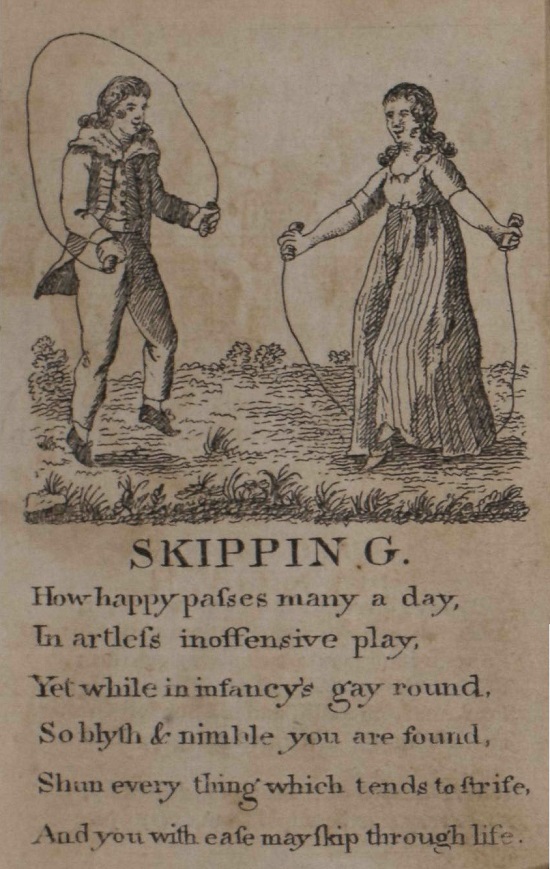
This month’s release of Early American Imprints, Series II: Supplement 3 from the American Antiquarian Society highlights three of the rarest early 19th-century books for children—all of which are distinguished by their illustrations.
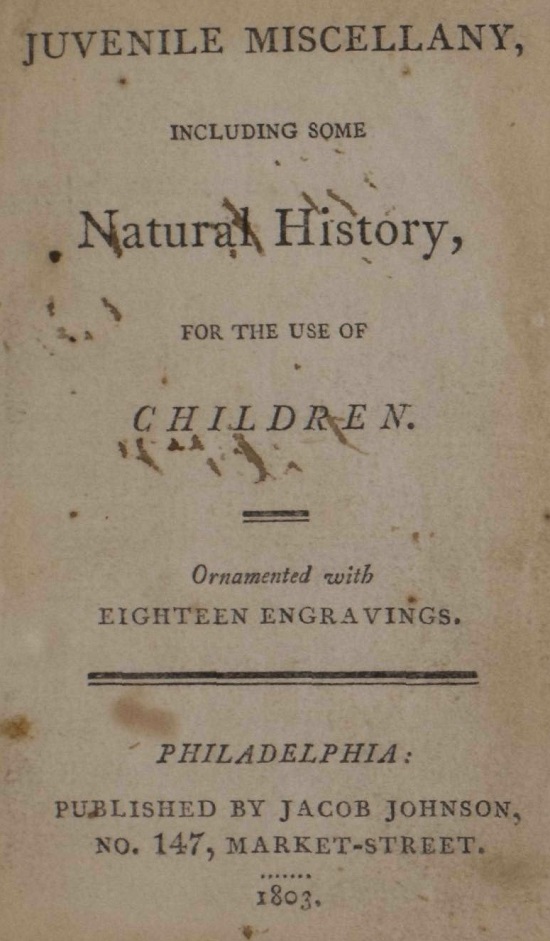
Juvenile Miscellany, Including Some Natural History, for the Use of Children. Ornamented with Eighteen Engravings (1803)
The intaglio prints which adorn this imprint are as varied as the text. The author declares his serious intent:
“Children naturally love truth, and when they read a story, enquire whether it is true? If they find it true, they are pleased with it; if not, they value it but little; and soon it becomes insipid.”
Admitting this sentiment as sound doctrine, the editor of the present little volume has been careful to select such matter for his young friends, as cannot fail to interest them, and at the same time, leave on their minds some useful impression.
The text is an admixture of moral tales and axioms:
When you are lawfully engaged in the business of life, take heed that your heart and affections cleave not to the dust.
Our principles only become pleasing and delightful, when by the influence of them we learn to calm and govern our passions; and are formed by them into such a temper, as renders us capable of cheerfully enjoying the blessings of the present world, and the higher happiness of a better.
And there are delightfully illustrated warnings:

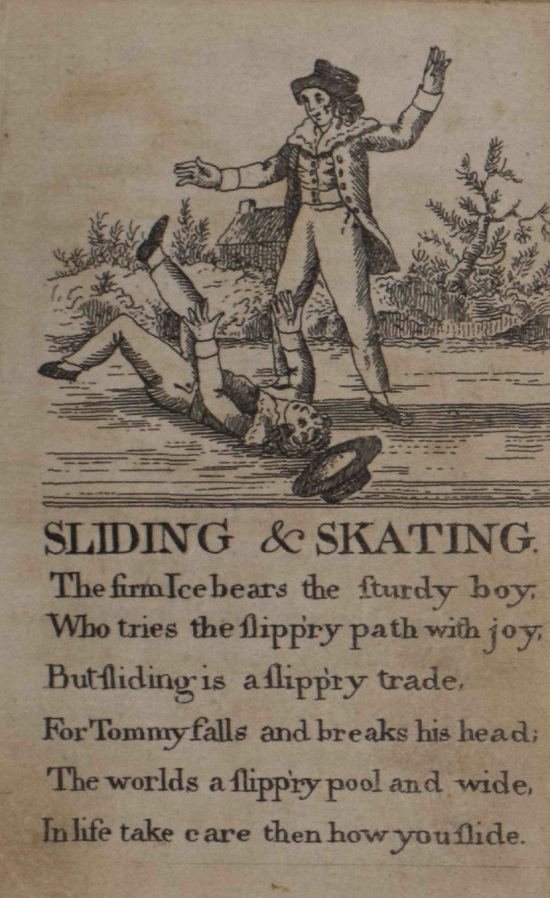
Advice is offered that Calvin Coolidge might have appreciated:
Avoid company where it is not profitable or necessary; and then speak little and last.
Many have suffered by over-talking, but few from silence.
If we think twice before we speak, we may speak twice the better for it.
Silence is wisdom, where speaking is folly.
On a mostly cheerful note, the author includes a section on the descriptions, and illustrations, of various birds:
The Turtle-dove
This beautiful little bird is found in several parts of England, but particularly in the western counties. It feeds on a variety of vegetable substances; and being remarkably shy, breeds only in the most retired situations. Its faithful attachment to its mate has been proverbial in every age; and, if we may credit vulgar tradition, when either of them pays the debt of nature, the survivor remains in a state of disconsolate solitude to the end of life.
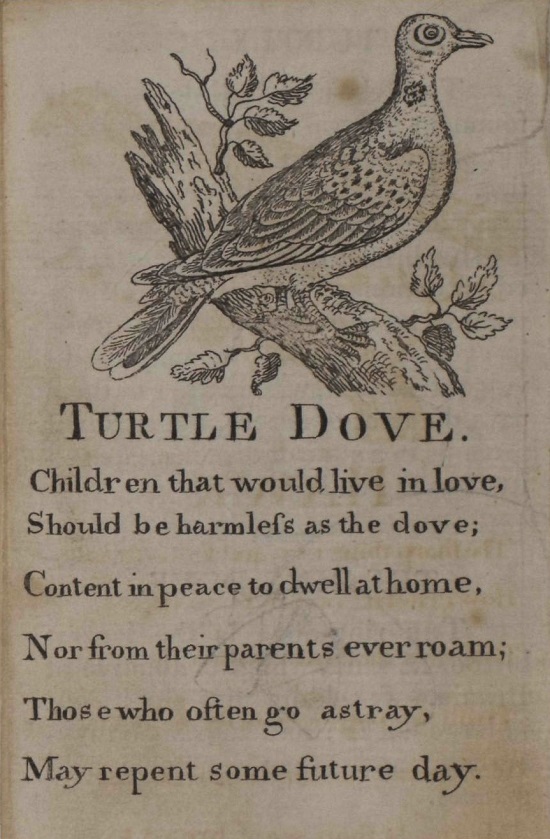
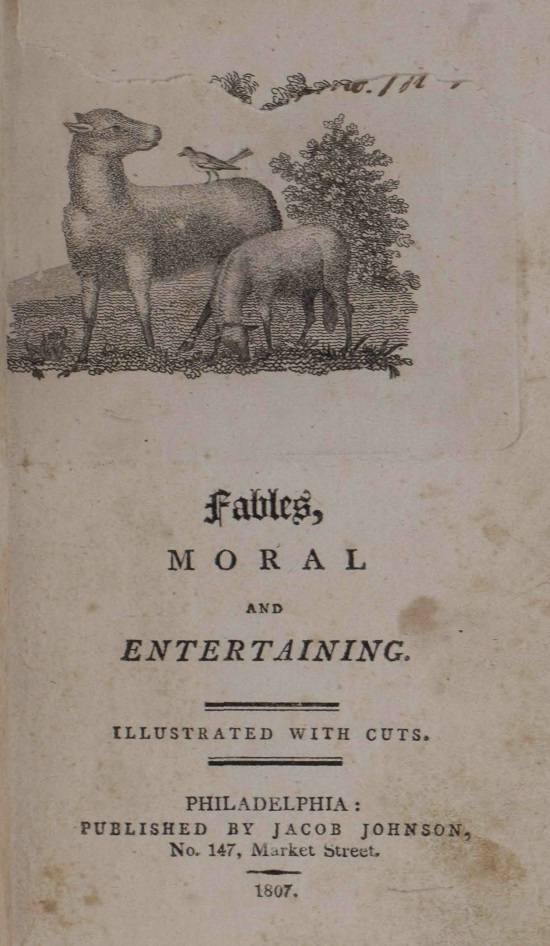
Fables, Moral and Entertaining: Illustrated with Cuts (1807)
Illustrated with intaglio prints, this rare work was published in Philadelphia by Jacob Johnson in 1807. Its moral tales are meant for the amusement and instruction of children.
“The two Dogs” relates the story of a boy who had two dogs, Pantaloon and his parent Snarl. Pantaloon was endlessly amusing to the boy “who had taught him to mount guard, to dance, to swim, fetch and carry, &c.” The boy determined that he should teach old Snarl the same tricks.
Snarl, who was in other respects a very good dog, had no taste for these refined accomplishments; hitherto he had been only told to watch the house, and come when he was called….The elder brother was now called in, who advised that the old scholar should be taught with a cane, and see what effect that would have: he however performed no better, and at length began to growl; saying. “I am too old to be taught, now; and let my example convince you, that youth is the only time for improvement.”

“The Cat and the Pigeons” has a different moral to convey. Charles had a pair of pigeons, to whom he gave a cat as a playmate. The cat was tame and apparently harmless.
Tibby seemed as much pleased with the birds as his master, for they would perch upon his back and peck him with their beaks, while he would run away, and suddenly turning round, catch them in his paws, and on their begging pardon, let them go. This pastime went on without any mischief for some time; till, once having forgotten to close his talons, they entered so deeply into the breasts of the pigeons that blood began to flow. Tibby was pleased with the taste of this red wine, and no one being near to check his nature, he continued to covet it more and more, till he took a fancy to the flesh, and at length devoured his former companions. MORAL. Do not, my children, trust your lurking passions, but always keep them under control. Natural propensities are very difficult to eradicate.
“The Fox and Stork” describes a confrontation between a fox and a stork wherein the fox taunts the stork for his appearance, singling out his bill, neck, and legs.
“By no means,” replied the stork; “I am quite satisfied with my form and proportion, and particularly with those parts you find so much fault with. They are all well adapted to supply my wants; I seek only muddy pools, and the fattest vermin, and the length of my neck and bill are fitted for the purpose.” MORAL. The grovelling [sic] mind is more attached to low pursuits than the acquirement of ornamental information.
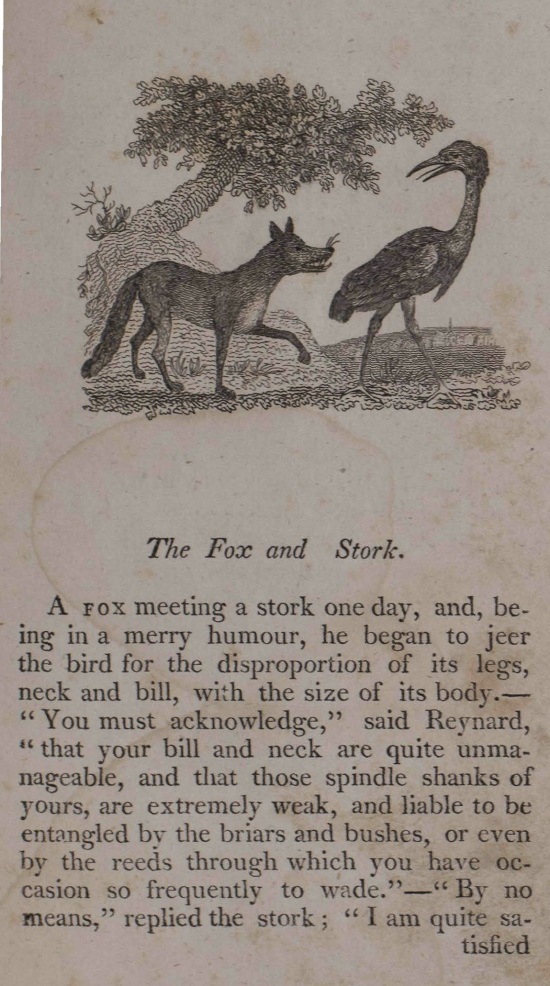
“The marauding Pike” relates the tale of pike who was “the terror of the stream” and decides his realm is too small, determining to head for “the boundless ocean, and satiate my sanguinary appetite.”
He immediately commenced his journey, and was no sooner in the ocean, than a tremendous shark, who never spares friend or foe, opened his terrific jaws, and in a moment devoured him. MORAL. Little tyrants are in due time the prey of the more potent. May those who resemble the pike, meet with a similar fate.
And one last moral is conveyed by the story of “The Lion and the Fox.” The fox goes to the lion to report that he is being defamed by the ass. He expands on his allegations.
The lion sat silent for a time, and at length calmly said: “let him say what he pleases:—the character of a lion is not to be injured by the opinion of an ass. In the mean time, he who endeavours to incense me against others, and flatters me to make me his dupe, him I detest;—therefore, begone wretch, or you will perish.”
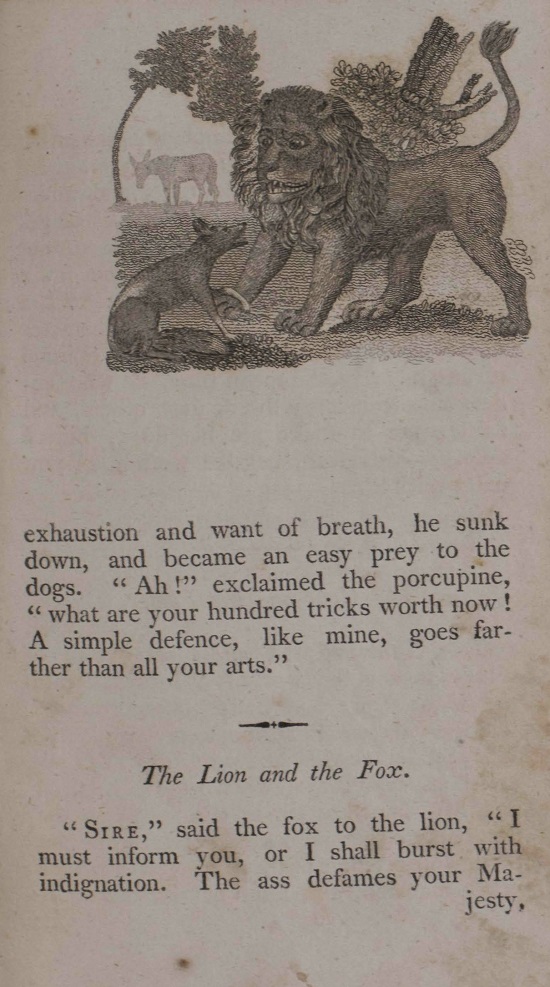
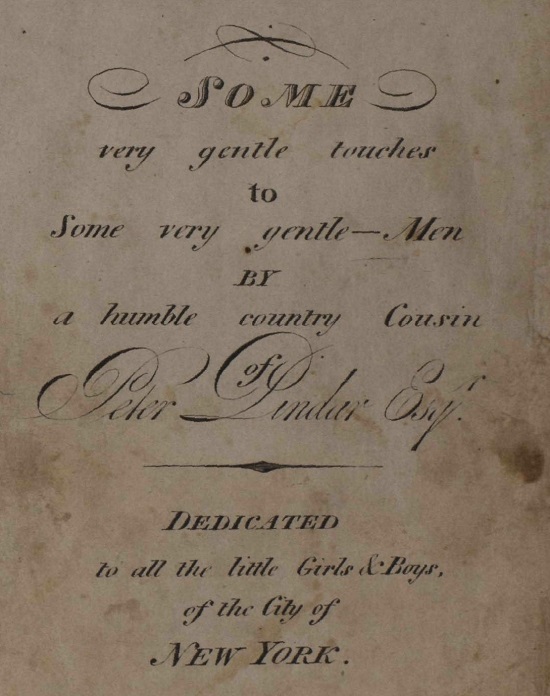
Some Very Gentle Touches to Some Very Gentle-Men. By a Humble Country Cousin of Peter Pindar Esq. (1806)
“Dedicated to all the little girls & boys, of the city of New York,” this imprint includes intaglio prints which have been hand-colored. It is a picture book for children written in verse some of which are humorous or satirical. The poems and illustrations limn a city where pigs roam the streets causing havoc.
In a City far fam’d
Which must not be nam’d
A City most wise & most fine:
There is to be seen
A sight the most clean,
The streets all alive with the swine.
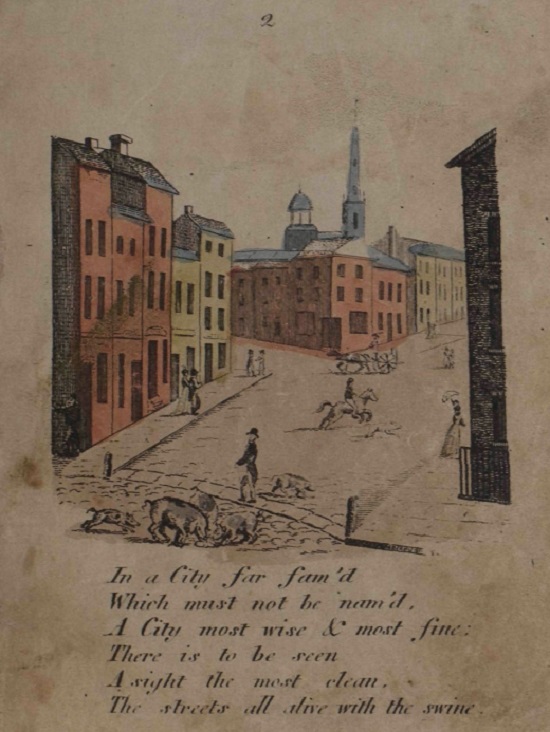
These charming sweet creatures,
With delicate features,
Salute all the Lads & the Lasses;
They plunge in the gutter,
And make a great splutter,
Then dowse on each Lady that passes.
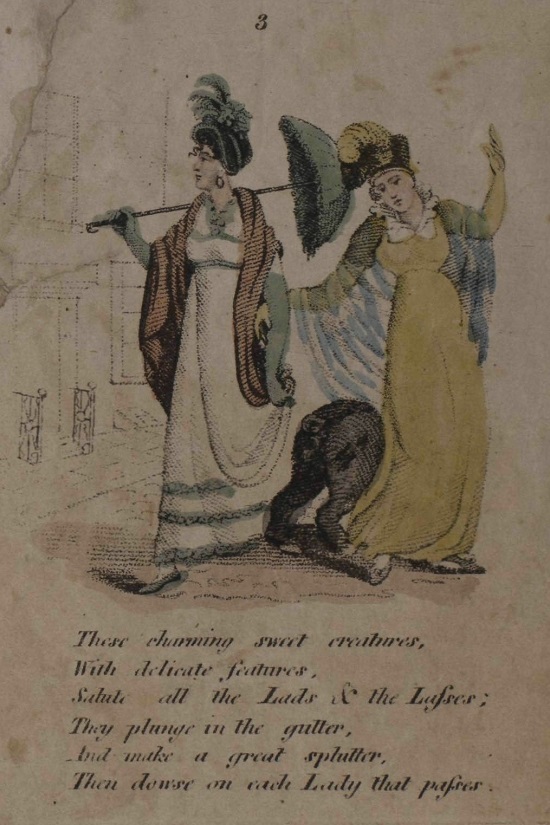
Each verse is adorned with an excellent colored illustration. Some more verse:
In this City so fair,
Resides Mr. Mayor;
But he ‘tis suppos’d always rides,
For if he should foot it,
Where these dirty snouts root it,
‘Tis hop’d he would feel their fat sides.
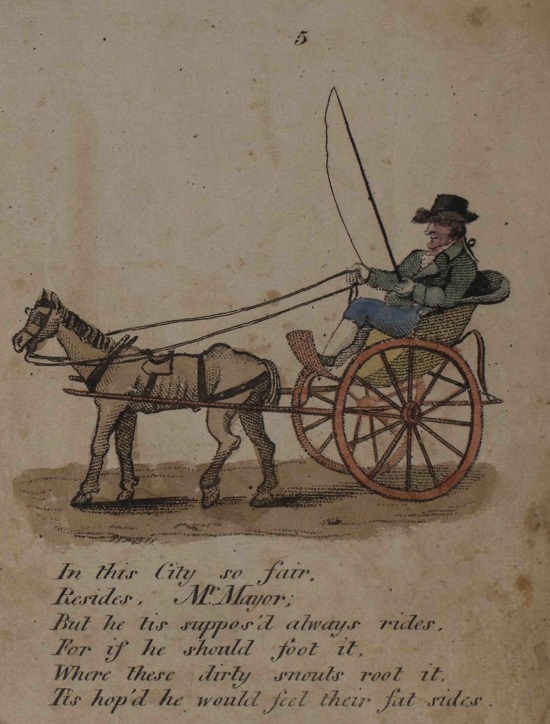
This extremely rare imprint is a pleasure. The verse is fun, and the illustrations are delightful.
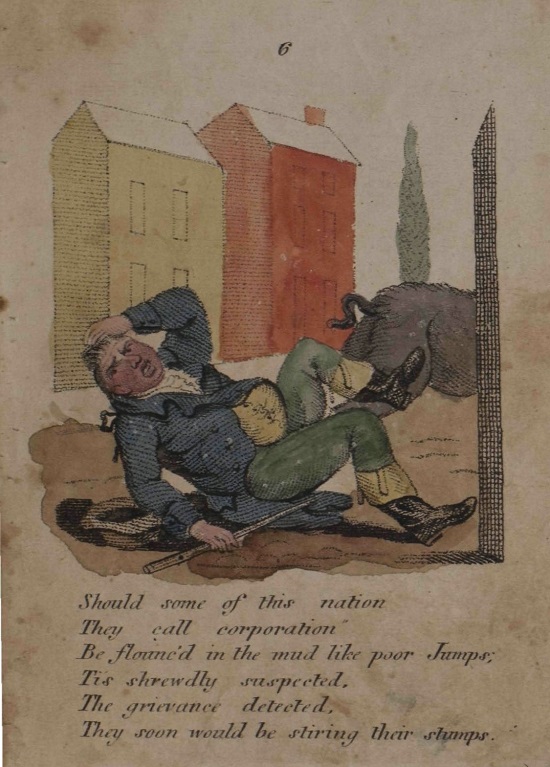
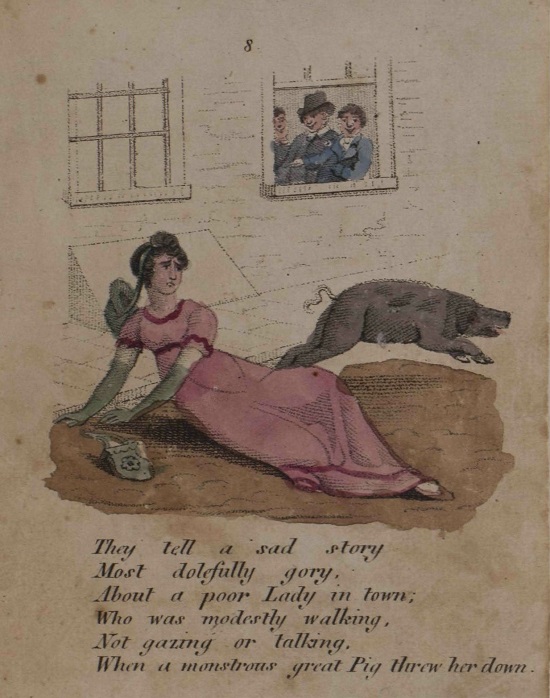
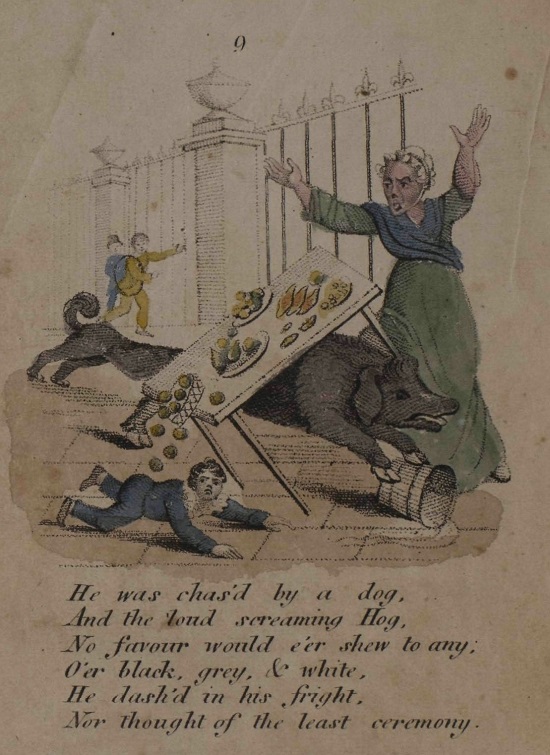
For more information about Early American Imprints, Series II: Supplement 3 from the American Antiquarian Society, please contact Readex Marketing.



